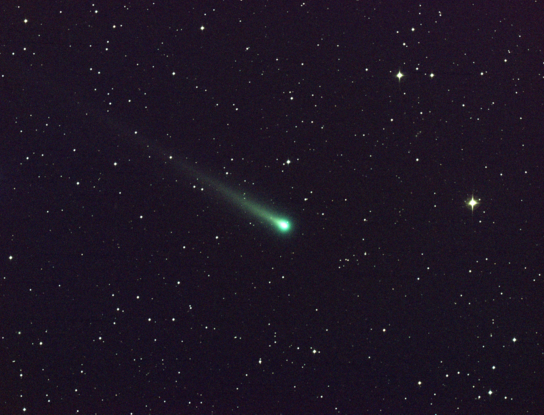By Jake Ke, | March 27, 2016

The so called twin comets came the closest icy rocks to pass by the planet in two centuries.
Comets, which routinely pass by the planet, have long taken the interest of Earth's inhabitants. For millennia, their passing has been considered as a sign of bad omen. For the Greeks, comets were thought to be connected with conflict and demise. It was not until the 17th century wherein formal study of the comet's movements were instituted.
Like Us on Facebook
Since then a few famous comets have passed by the planet several times. Arguably, Halley's comet which comes into close contact with the Earth every 75-76 years. It was initially recorded by Edmund Halley in 1682 and was subsequently observed in 1758, 1835, 1910, 1986.
Aside from the Halley's Comet, there are a few other icy space rocks that swing by the planet every few years. In fact, just last week a pair of comets visited the Earth. The so called twin comets came the closest icy rocks to pass by the planet in two centuries.
According to a report by AccuWeather, Comet 252P and Comet P/2016 BA14, otherwise known as LINEAR and PanSTARRS respectively, passed by the Earth last March 2-22, 2016.
Comet LINEAR made its approach to Earth last Monday. The comet came within 3.2 million miles from Earth. The passing of LINEAR has been charted as the fifth closest comet to pass by the planet in recorded history.
"The comet really brightened significantly for Southern Hemisphere observers last week. It is on the cusp of naked eye visibility" quipped AccuWeather Meteorologist Dave Samuhel.
Comet PanSTARRS, which also whizzed by the planet last week, came just 2.2 million miles from Earth. PanSTARRS' visit is said to be the third closest approach of any other comet in history. The last time an icy rock came as close as Comet PanSTARRS dates back to the 1700s.
Paul Chodas, manager of NASA's Center of Near-Earth Object Studies, claimed that given the fragile nature of comets and the relative size of PanSTARRS, it is likely that Comet PanSTARRS is a fragment of Comet Linear.
"Comet P/2016 BA14 is possibly a fragment of 252P/LINEAR. The two could be related because their orbits are so remarkably similar," quipped Chodas as reported by CNET.
-
Use of Coronavirus Pandemic Drones Raises Privacy Concerns: Drones Spread Fear, Local Officials Say

-
Coronavirus Hampers The Delivery Of Lockheed Martin F-35 Stealth Fighters For 2020

-
Instagram Speeds Up Plans to Add Account Memorialization Feature Due to COVID-19 Deaths

-
NASA: Perseverance Plans to Bring 'Mars Rock' to Earth in 2031

-
600 Dead And 3,000 In The Hospital as Iranians Believed Drinking High-Concentrations of Alcohol Can Cure The Coronavirus

-
600 Dead And 3,000 In The Hospital as Iranians Believed Drinking High-Concentrations of Alcohol Can Cure The Coronavirus

-
COVID-19: Doctors, Nurses Use Virtual Reality to Learn New Skills in Treating Coronavirus Patients







